LAB REPORT
Science and Technology Making Headlines
Dec. 17, 2021

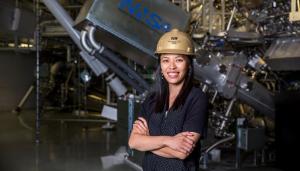
LLNL’s Tammy Ma recently discussed the future of fusion energy.
Fusion for a clean energy future
Fusion energy — a non-polluting, limitless form of power — has long been thought of as a technological fantasy. But now scientists say they are closer than ever to making it a reality.
Fusion energy comes from the process of nuclear fusion, which is how the sun continuously converts small amounts of hydrogen into incredible amounts of energy. For decades, scientists have been trying to recreate this process using a combination of experimental reactors, hydrogen and heating plasmas to temperatures hotter than the sun. Other scientists are working to prove that a self-sustaining fusion reaction can be generated using high-powered lasers.
Al Jazeera’s show “The Stream” recently reached out to LLNL’s Tammy Ma to discuss the recent breakthrough at the NIF, where the team achieved a 25x improvement in getting more energy out than the lasers put in compared to where the team was a year ago.

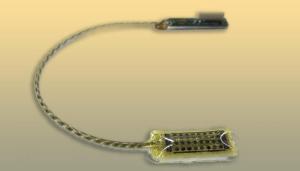
Researchers found that the flexibility of LLNL-developed thin-film microelectrodes, combined with higher-density grid spacing, provides greater levels of detail about how the brain works.
Electrodes on the brain
Biomedical engineers at Lawrence Livermore have developed a new way to make small, flexible neural electrodes. They used a 2.5-D printing process to create flat patterned layers of materials that are then etched into their final form. For their first electrode, the team used layers of polymers and metals.
This method lets many small, thin-film electrodes that are essentially identical to be made at once, which the team says should give the individual electrodes excellent consistency. This consistency should then make the electrodes more precise in sending and targeting different areas of the brain.
The thin-film electrode arrays also transmit higher-quality signals than their commercial counterparts, thanks to their flexibility which lets the electrodes make closer contact to the brain’s cortex. The flexibility also lets the array be molded into cylindrical shapes so it can be inserted into the brain. The array has uniform stiffness due to the electrodes’ metal conductors being evenly distributed. In conventional electrode arrays, the wires are bundled, giving the array uneven and higher stiffness which prevents them from lying closely to the brain’s surface.

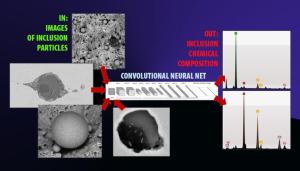
LLNL will partner with steel and mining company ArcelorMittal to couple computer vision and machine learning methods with HPC resources to reduce emissions and defects in steel manufacturing. Shown is an example of backscattered electron scanning electron microscope images showing different types of inclusions. Image courtesy of ArcelorMittal.
It’s a steel
A Lawrence Livermore National Laboratory-led collaboration targeted at using machine learning to reduce defects and carbon emissions in steelmaking is one of eight new projects receiving Department of Energy funding through the High Performance Computing for Manufacturing Program.
As part of the project, LLNL will partner with steel and mining company ArcelorMittal to couple computer vision and machine learning methods with HPC resources to reduce defects from inclusions (oxide, sulfide or nitride particles) in steel manufacturing. The technology will be used to accelerate analysis of steelmaking — usually performed through automated scanning electron microscopy on samples taken from liquid steel — to enable near-real-time process control and save energy by avoiding rejection of products due to poor quality.
The iron and steel industry consumes an estimated 6 percent of the energy used by the U.S. manufacturing sector. The technology addressed in the project could reduce this number by 1 percent to 2 percent and lessen CO2 emissions by about 1.5 million tons per year, according to the company.

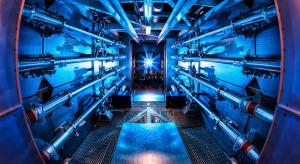
Preamplifiers at the National Ignition Facility boost the energy of the laser beams that ultimately are used to compress hydrogen fuel. The photo is color-enhanced.
And the most read is…
It’s time for Physic Today’s annual roundup of the most popular stories on the magazine’s website. This year, editors extended their roster to include not just the most-read pieces of 2021 but also the most shared (as measured by Altmetric score) and the most accessed from the Physics Today archives.
And the most read is: Lawrence Livermore claims a milestone in laser fusion (published online Aug. 17).
On Aug. 8, researchers at the National Ignition Facility (NIF) at Lawrence Livermore National Laboratory came by far the closest yet to achieving their goal of getting a pellet of hydrogen fuel to release more energy than that of the lasers fired upon it. Their 177th attempt at ignition since 2009 released 1.3 megajoules, Physics Today’s David Kramer reported, which is nearly 70 percent of the laser energy.

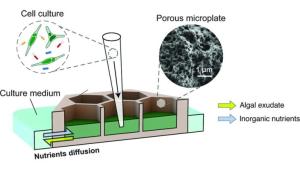
A schematic diagram showing the concept of a porous microplate, where microalgae and bacteria can be cultured in wells at different distances from one another and can exchange nutrients and metabolites without physical contact. Image courtesy of Hyungseok Kim/Massachusetts Institute of Technology.
Location, location, location
Microscopic algae are responsible for half of the global atmospheric carbon fixed from the atmosphere through photosynthesis, and may be used as a sustainable bioenergy source.
The water immediately outside their cells, called the "phycosphere," is rich with algal-excreted organic carbon, and is an ideal ecosystem for bacterial growth. However, detecting and measuring bacterial cell activity and population growth in the phycosphere has been difficult, because it has not been possible to track single bacteria and their locations in relation to algal cells over the course of an algal population growth cycle.
But scientists from Lawrence Livermore and collaborators have created a new co-culture device, dubbed a “porous microplate,” to figure out how the phycosphere structures bacterial communities. The nanoporous copolymer allows cell metabolite exchange while blocking physical contact between adjacent culture wells.
The team showed that algal-associated bacteria grew faster when placed closer to the algal culture well, as might be expected in the real phycosphere environment.


Livermore Lab Report takes a break
The Livermore Lab Report will take a break for the holiday season. It will return Jan. 7.





